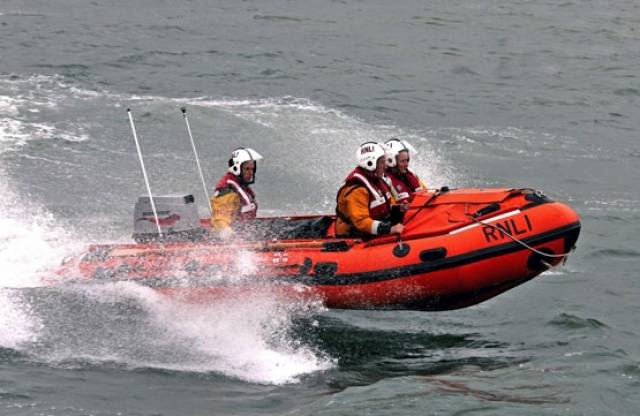#RNLI - Fethard RNLI assisted a man who got into difficulty off the Wexford coast yesterday evening (Tuesday 23 August) as he attempted to move between two boats.
The volunteer lifeboat crew launched their inshore lifeboat at 9.35pm following a request by the Irish Coast Guard that a man had entered the water at the Coal Yard in Cullenstown.
The lifeboat, helmed by John Colfer and with crew members Thomas Stafford, Finola Foley and Cathal O'Connell onboard, launched immediately from Fethard and proceeded five nautical miles to the scene.
Weather conditions at the time were described as calm with a Force 3 west to north-westerly wind.
The casualty, who was wearing a lifejacket at the time, had been manoeuvring from one vessel to another when he entered the water and got into difficulty. A member of his party who had already come ashore raised the alarm.
Shortly before arriving on scene, the crew received communication from the coastguard that the casualty had managed to swim ashore. On arrival, the lifeboat crew safely transferred the man into the D class inshore lifeboat Trade Winds and administered first aid.
The crew brought the casualty straight ashore at the Coal Yard, where members of the local coastguard unit were also on site. The volunteer crew continued first aid until the arrival of an ambulance that transferred the casualty to hospital as a precautionary measure.
Speaking following the callout, Fethard RNLI deputy launching authority Tony Molloy said: "Every minute counted this evening due to the period the casualty had spent in the water and the external temperature.
"The bar of the lough at Cullenstown can be quite a treacherous to manoeuvre in darkness, so the knowledge and skill set of the crew who know the area and the manoeuvrability of the D class inshore lifeboat was essential in getting to the scene where the crew was able to respond rapidly.
"We would like to commend the casualty for wearing his lifejacket and the member of his party who raised the alarm when they started to experience problems. We wish them both well following their ordeal."
Molloy added: "Tonight’s callout was a fine example of good team work with our crew putting their training and skills into practice working alongside our colleagues in the local Irish Coast Guard unit."
This weekend sees the inaugural Waves Music Festival to raise funds for Fethard RNLI to secure a new inshore lifeboat, a major boost for which they received recently from host venue Loftus Hall.
































































